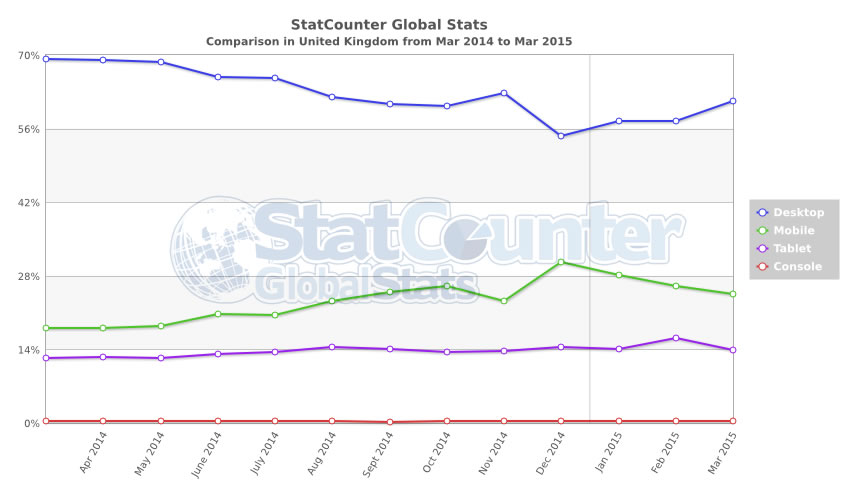Google will shortly roll out a very significant change to the way it ranks websites as it recognises that more people are using mobile devices to access the Internet. This means that a Google search on a mobile device such as a smartphone or tablet is likely to rank mobile friendly websites higher than websites that haven’t been optimised  for mobile devices. To quote Google directly “Starting April 21, we will be expanding our use of mobile-friendliness as a ranking signal”. It will also start to feature more Apps from Google Play.
for mobile devices. To quote Google directly “Starting April 21, we will be expanding our use of mobile-friendliness as a ranking signal”. It will also start to feature more Apps from Google Play.
At the time of writing Google is already subtly adding a grey piece of text to all mobile searches indicating whether a website is mobile friendly – see the screenshot on the right. Just so we’re clear this shouldn’t affect searches conducted on desktop PCs or laptops, just mobile devices. Although you should ignore mobile users at your peril; a common pattern of usage is the same individual using multiple devices to view the same content. So, for example, someone may research a purchase using their mobile, but use a PC to complete the purchase or vice-versa.
Starting April 21, we will be expanding our use of mobile-friendliness as a ranking signal
Is your website for mobile friendly?
There are a number of services you can use to test how your current website is shaping up to meet the new challenges:
- Test your website for mobile friendliness – Use Google’s own mobile friendliness tool, to add your domain name and it comes back back with a simple thumbs up or thumbs down pass or fail, plus some feedback.
- Test your website speed – This is an important ranking factor for Google: all other factors being equal the faster a website loads, the higher it will rank. Therefore it’s no surprise that Google provides its own tool for checking how quickly your website loads – Google’s Page Speed Insights tool.
- Use Google Webmaster tools – When logged into Google Webmaster Tools you can navigate to the Mobile Usability Report and see specific issues WMT is showing with specific pages there, as well. Google is currently sending out notifications through Webmaster Tools for sites that won’t meet the new mobile friendliness requirements.
- Check your current traffic levels and the breakdown of Desktop vs Mobile vs Tablet users – If you use Google Analytics you can find this data in Reporting > Audience > Mobile > Overview. Compare this to the latest average statistics using Statcounter. How you interpret these results is important. For example if your website is showing low Mobile traffic this could either be the nature of your current customer base or, and more likely, your website does not provide a good user experience for mobile users and people don’t bother using a mobile to view it. From the 21 April 2015 your website may be penalised on the search engine rankings for mobile users.

Average split between Desktop, Mobile, Tablets and Consoles users.
Once you have a picture of how your website performs for mobile users you can make more informed decisions on whether your website is ok or needs a major overhaul for in readiness for the 21 April 2015.
Please get in touch with Dinesh on 07941 686113 or email us using our Contact page for more information.
Further reading:
Finding more mobile-friendly search results – from Google’s official blog
Google’s Mobile Update: What We Know So Far (Updated 3/25)
The Small Business Owner’s Guide to Google’s April 21 Mobile-Friendly Algorithm Update






